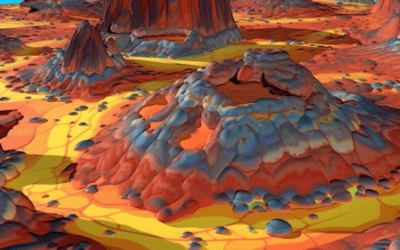How is it Possible to Predict the Weather Days, Weeks, or Even Months into the Future?
Introduction
Predicting the weather in advance is no easy task. It requires the use of advanced technology, worldwide cooperation, and lots of data. But how do meteorologists manage to forecast the weather days, weeks, or even months ahead? Let’s find out!
Gathering Weather Data
In order to predict the weather accurately, meteorologists need to collect a vast amount of weather data. They use special instruments like weather balloons, satellites, and weather stations to measure different aspects of the atmosphere:
- Temperature: Thermometers measure the air temperature.
- Humidity: Hygrometers measure the amount of water vapor in the air.
- Pressure: Barometers measure the air pressure.
- Wind Speed and Direction: Anemometers and wind vanes track the speed and direction of the wind.
All this data helps build a clearer picture of what’s happening in the atmosphere.
Weather Forecast Models
Once meteorologists have gathered the weather data, they use powerful computers to process it. These computers run complex mathematical models called weather forecast models. These models simulate the Earth’s atmosphere to predict how it might behave in the future.
How do they work? Imagine you’re baking a cake. You have the recipe, which tells you the right amount of ingredients to use and the steps to follow. In the same way, weather forecast models have equations that describe how the atmosphere moves and changes with time. By solving these equations, meteorologists can forecast weather patterns.
Predicting the Weather in the Short Term
When it comes to predicting the weather a few days ahead, meteorologists rely on short-term weather forecast models. These models take the current weather conditions and simulate how they might evolve over the next few days.
For example, if the models detect a low-pressure system moving towards an area, they can predict that the region will experience rain and possibly thunderstorms. By continuously updating these models with new data, meteorologists can refine their forecasts and make them as accurate as possible.
Predicting the Weather in the Long Term
Forecasting the weather weeks or even months in advance is much more challenging. However, meteorologists still have some tools at their disposal:
- Climate Patterns: Meteorologists study long-term climate patterns like El Niño or the Arctic Oscillation. These patterns can influence weather on a larger scale, allowing meteorologists to make general predictions.
- Statistical Analysis: By analyzing historical weather data, scientists can identify patterns and trends. For example, they may notice that when a certain weather pattern was observed in the past, it was often followed by specific weather conditions.
- Ensemble Forecasting: Instead of relying on a single weather forecast model, meteorologists use ensemble forecasting. This approach involves running several different models with slight variations in their initial conditions. By analyzing the range of results, meteorologists can get a sense of the likelihood of different weather outcomes.
Conclusion
Predicting the weather days, weeks, or even months into the future is a complex task that combines the collection of extensive weather data with advanced computer models. While short-term forecasts are generally more accurate, long-term predictions rely on climate patterns, statistical analysis, and ensemble forecasting. By continuously improving technology and refining prediction methods, meteorologists strive to make weather forecasts as reliable as possible.












